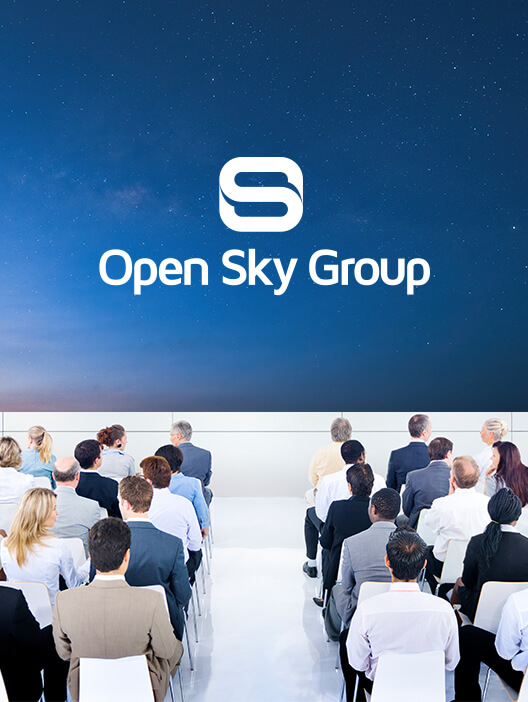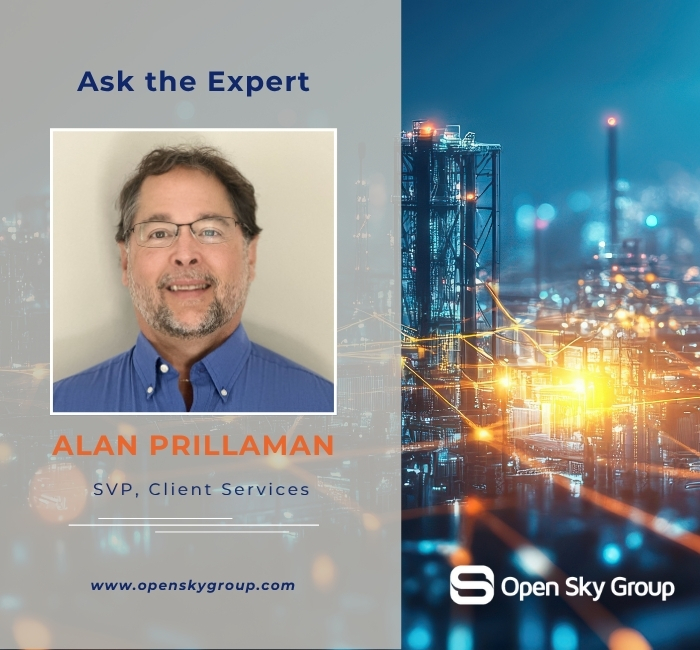Alan Prillaman
Title: SVP, Client Services
Years with OSG: 6
Years in Supply Chain: 35
Ask the Expert
What does your day-to-day look like?
Every day is a blend of strategic planning and execution. I focus on aligning supply chain solutions with business goals, optimizing operations, and collaborating with internal and external cross-functional teams. A significant portion of my time is dedicated to evaluating technology introduction into business processes – like SAP and Blue Yonder SaaS – to improve efficiency and visibility. Whether it’s problem-solving logistics challenges or crafting strategies for scalability, my approach is rooted in continuous improvement and innovation.
How did you get started in supply chain?
I began my career in supply chain management with a strong hands-on foundation in operations, procurement, and logistics, quickly recognizing its impact on business success. Over time, I specialized in strategic execution, leading teams and designing solutions that drive efficiency across multiple organizations, many of which were based in the heavily regulated life sciences and pharma verticals. My diverse experiences and interactions with large multi-national organizations shaped my expertise in organizational development, sales and account management, contract negotiation, lean-based process improvements, and customer-centric supply chain solutions.
How does supply chain impact a company’s broader strategy?
Supply chain management and execution aren’t just operational levers – they’re strategic powerhouses that can shape a company’s competitive advantage, profitability, and long-term growth. Here’s how they ripple through a broader strategy:
- Supports corporate vision: A well-orchestrated supply chain ensures that product availability, speed to market, and cost structure are in harmony with the company’s overarching mission.
- Enables market differentiation: Agile, customer-centric supply chains can be a strategic differentiator – think Amazon’s same-day delivery or Zara’s rapid fashion cycles.
- Drives cost efficiency: Strategic sourcing, optimized inventory, and streamlined logistics directly improve margins.
- Capital utilization: Minimizing excess inventory and improving forecast accuracy frees up cash for investment in growth or innovation.
- Delivers customer experience: Execution excellence ensures the right product, at the right place, at the right time – essential for customer satisfaction and loyalty.
- Enables market agility: Rapid response to changes in demand or disruption positions companies to capture market opportunities or mitigate risks.
What do you view as the biggest challenge in the current supply chain environment and how can it be solved?
One of the most pressing challenges in today’s supply chain environment is end-to-end resilience in the face of persistent disruptions and ever-evolving consumer expectations. This is not limited to any one specific challenge, but rather a mixture of geopolitical challenges, climate-based disruptions, labor shortages, and cybersecurity threats, all converging at once.
Several strategic solutions to address these challenges are:
- Diversification & Nearshoring
- Reduce dependency on single-source suppliers or regions
- Nearshoring strategies are gaining traction to mitigate geopolitical risk
- Digital Twin & AI-Driven Execution
- Use AI-powered digital twins to simulate disruptions and optimize responses in real time
- These tools can prioritize procurement, reroute inventory, and adjust production schedules autonomously
- Predictive Risk Management
- Leverage machine learning to forecast disruptions and model contingency plans
- Integrate real-time data from suppliers, logistics, and weather systems to stay ahead of issues
- Workforce Transformation
- Invest in upskilling and automation to address labor shortages and improve agility
- Build cross-functional teams that can flex across planning, sourcing, and execution
- Sustainability as Strategy
- Regulatory and consumer pressure are making compliance a strategic imperative
- Sustainable sourcing, circular logistics, and carbon tracking are no longer optional – they’re differentiators
What philosophy do you follow while working with customers?
I believe in customer-centric supply chain solutions. My approach focuses on understanding their unique operational challenges and tailoring strategies that drive efficiency and cost-effectiveness. At FedEx Supply Chain, this philosophy helped secure $360M in contract revenue by designing solutions that directly addressed customer pain points. Communication, transparency, and continuous improvement are essential in building strong partnerships.
Please share your favorite success story.
One of my favorite success stories was leading the development of a healthcare-focused multi-tenant facility strategy. This initiative optimized storage, distribution, and delivery for healthcare clients, creating scalable efficiencies, shared overhead expenses, and improving service accuracy for all clients. The solution not only strengthened partnerships, but also showcased how supply chain innovation can transform industry-specific logistics challenges into competitive advantages.
What advice would you give to someone looking to enter the supply chain industry?
For anyone looking to break into the supply chain industry, especially now – it’s an exciting time to join. Supply chains have moved from back-office functions to strategic priorities, and there’s growing demand for smart, adaptive thinkers.
Some high-level suggestions for someone considering this field:
- Grasp the fundamentals
- Understand core areas – sourcing, planning, logistics, fulfillment – and key metrics like OTIF and inventory turns
- Get tech-savvy
- Explore enterprise tools like SAP or Blue Yonder and understand how to leverage tech to achieve operational objectives. Stay curious about AI, ML, automation, and visibility platforms.
- Think holistically
- Learn how supply chains connect to marketing, finance, and customer service. Systems thinking is gold – stay out of silos.
- Build your network
- Follow practitioners, join industry groups (ASCM, CSCMP), and seek mentorship.
- Start in the trenches
- Begin with operational roles like planning, inventory management, transportation management or fulfillment operations to build hands-on experience.
- Commit to growth
- Stay resilient, pursue certifications (CPIM, CSCP), and always be learning – this field changes fast.
What is a fun fact about yourself that your clients may not know?
Nothing too exciting but, my wife and I are avid outdoors enthusiasts who enjoy hiking, boating (we have 2), RV camping (only have 1) at the beach, and both fresh and saltwater fishing. In my younger days, I was a muscle car enthusiast and had a 1970 Chevy Chevelle SS and two 1967 Camaros. I should have held onto them all based on today’s value!














